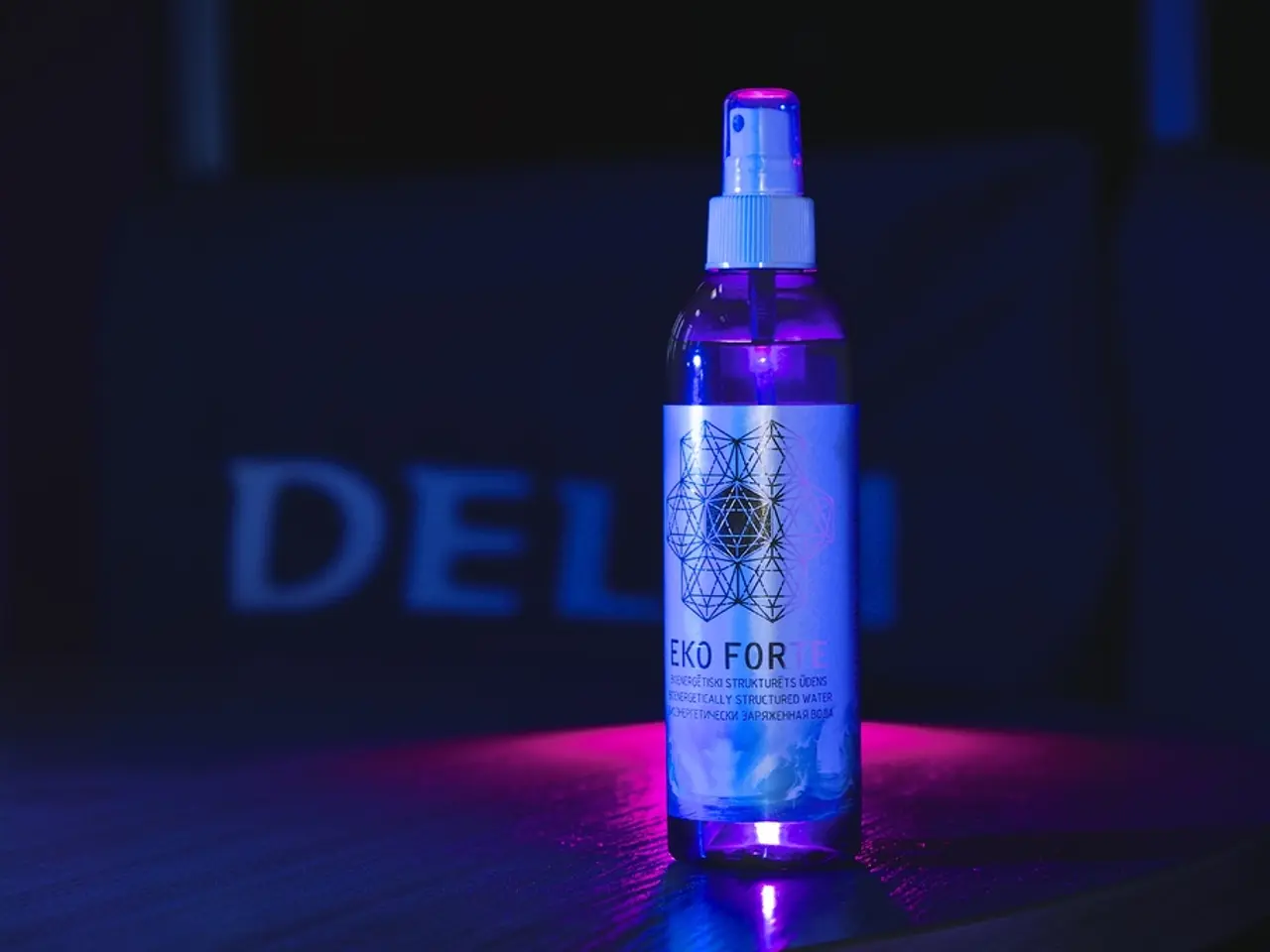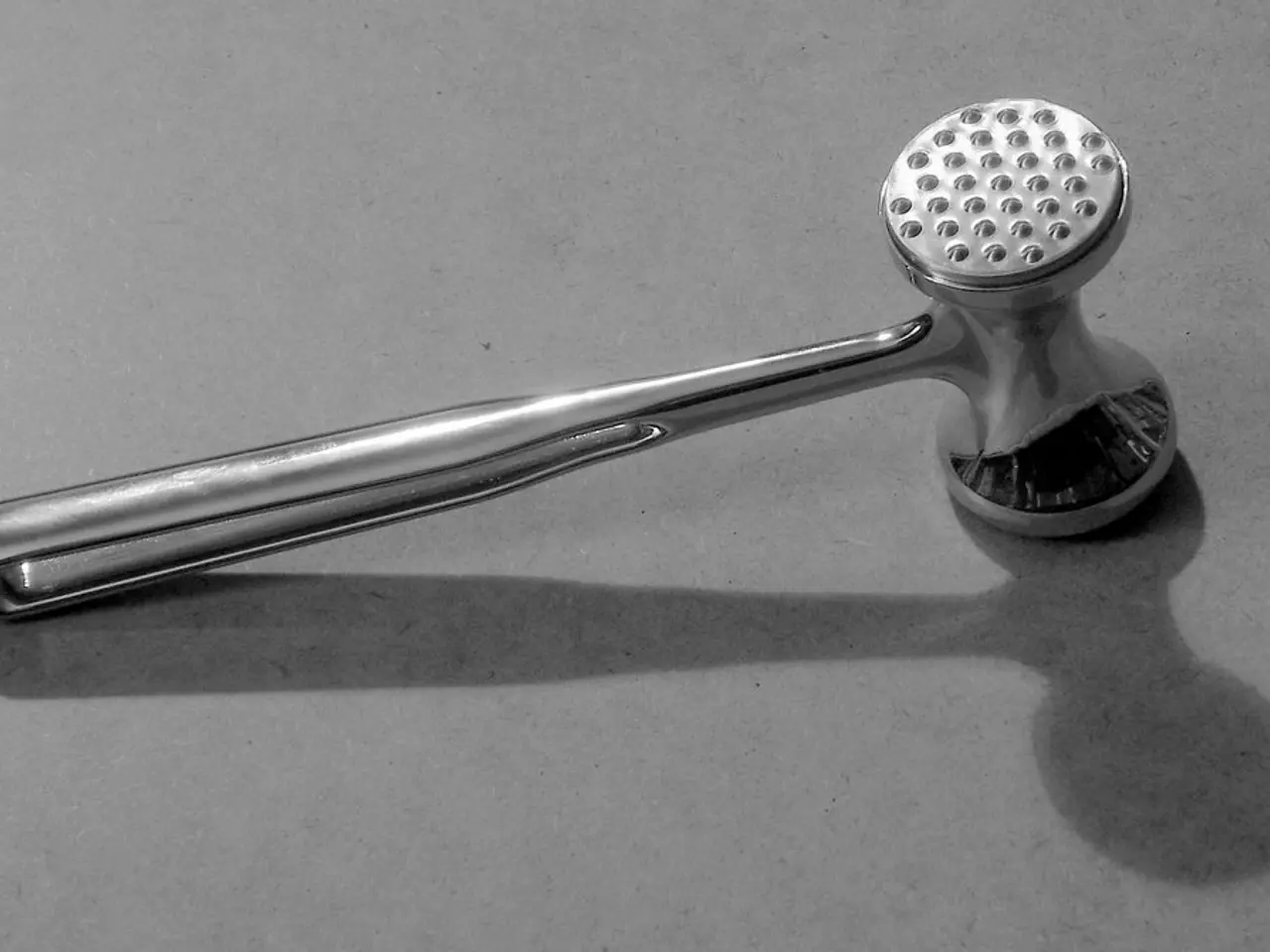Hyaluronic Acid: Applications, Potential Adverse Effects, and Potential Hazards
In the realm of skincare and cosmetic procedures, hyaluronic acid (HA) has emerged as a cornerstone ingredient, particularly for those seeking to combat the signs of aging. This naturally occurring substance, primarily responsible for trapping water inside tissue cells, plays a crucial role in maintaining skin health and hydration.
Topical application of HA over the long term effectively improves skin hydration, reducing signs of aging such as fine lines, and maintaining skin health with minimal risk. Studies show that HA can improve skin hydration by over 130% immediately and maintain a 55% increase after 6 weeks of use in photoaged skin[3]. Regular application or filler use also plumps the skin, visibly reducing fine lines and wrinkles by restoring volume and moisture[2].
HA is compatible with all skin types, including oily and acne-prone skin. It does not irritate or clog pores, and it can help reduce inflammation and soothe skin[2][4]. However, it's essential to perform a patch test before using a new skin product to ensure one does not experience adverse side effects or allergic reactions, which, while rare, can occur[4].
Injectable HA fillers provide longer-lasting but temporary volume restoration with some risk of filler migration over time. These fillers can be used for contouring purposes, such as lips or cheeks, and typically last between 6 to 18 months depending on the product[1]. Fillers can be dissolved with an enzyme (hyaluronidase), allowing for adjustments or corrections if needed[1].
While HA is generally very safe, rare cases of mild redness or irritation may occur, especially when combined with other active ingredients like vitamin C or retinoids[2][4]. Allergic reactions are very uncommon due to HA’s natural presence in the body[4]. In dry climates, HA might paradoxically cause dryness by pulling moisture from deeper skin layers if not used with a moisturizer[2]. Injectable HA is considered safe but requires professional administration to minimize risks such as migration or unevenness[1][5].
People who receive injections containing HA may experience pain, redness, skin discoloration, itching, swelling, and bruising, which should clear up within a week. However, in rare cases, people may experience severe side effects, such as infection or tissue necrosis, that require medical treatment[5].
It's important to note that hyaluronic acid may not be safe for pregnant or lactating women, or for children, and its effects during pregnancy and while breastfeeding remain unknown[6]. As people age, the levels of hyaluronic acid in their skin decrease, which can lead to dehydrated skin and wrinkles[7].
The Food and Drug Administration (FDA) approves the use of hyaluronic acid for injections into knee joints for people with osteoarthritis who do not respond to other treatments[8]. The FDA also approves the use of hyaluronic acid injections to relieve knee pain for people with mild to moderate osteoarthritis if other treatments have not worked[8]. Topical hyaluronic acid may help with wound healing by regulating inflammation and promoting wound healing for minor and severe wounds[9].
In summary, hyaluronic acid is a safe, well-tolerated, and effective component for anti-aging skincare when used appropriately. It plays a crucial role in maintaining skin hydration, reducing signs of aging, and promoting wound healing. However, it's essential to consult a healthcare professional before using hyaluronic acid products to ensure safety, especially for pregnant or lactating women, children, and those with a history of severe allergic reactions.
- In the skincare realm, hyaluronic acid (HA) stands as a vital ingredient, particularly for combating signs of aging.
- This naturally occurring substance primarily traps water inside tissue cells, maintaining skin health and hydration.
- Topical application of HA enhances skin hydration, reducing fine lines and signs of aging, and maintaining skin health with minimal risk.
- HA is compatible with all skin types, including oily and acne-prone skin, without irritation or pore-clogging.
- Performing a patch test before using a new skin product is essential to avoid adverse side effects or allergic reactions.
- Fillers containing HA provide temporary volume restoration for contouring purposes, lasting between 6 to 18 months.
- Fillers can be dissolved with an enzyme (hyaluronidase) for adjustments or corrections.
- Rare cases of mild redness or irritation may occur, especially when combined with other active ingredients, but allergic reactions are very uncommon.
- In dry climates, HA might cause dryness by pulling moisture from deeper skin layers if not used with a moisturizer.
- Injectable HA is considered safe but requires professional administration to minimize risks such as migration or unevenness.
- People experiencing pain, redness, skin discoloration, itching, swelling, and bruising after injections may need medical treatment in rare cases.
- Hyaluronic acid may not be safe for pregnant or lactating women, or for children, and its effects during pregnancy and while breastfeeding remain unknown.
- The Food and Drug Administration approves the use of hyaluronic acid for knee joint injections for people with osteoarthritis and wound healing, but its application extends to various medical conditions, chronic diseases, health and wellness, men's health, women's health, and skin care as part of the aging process.




